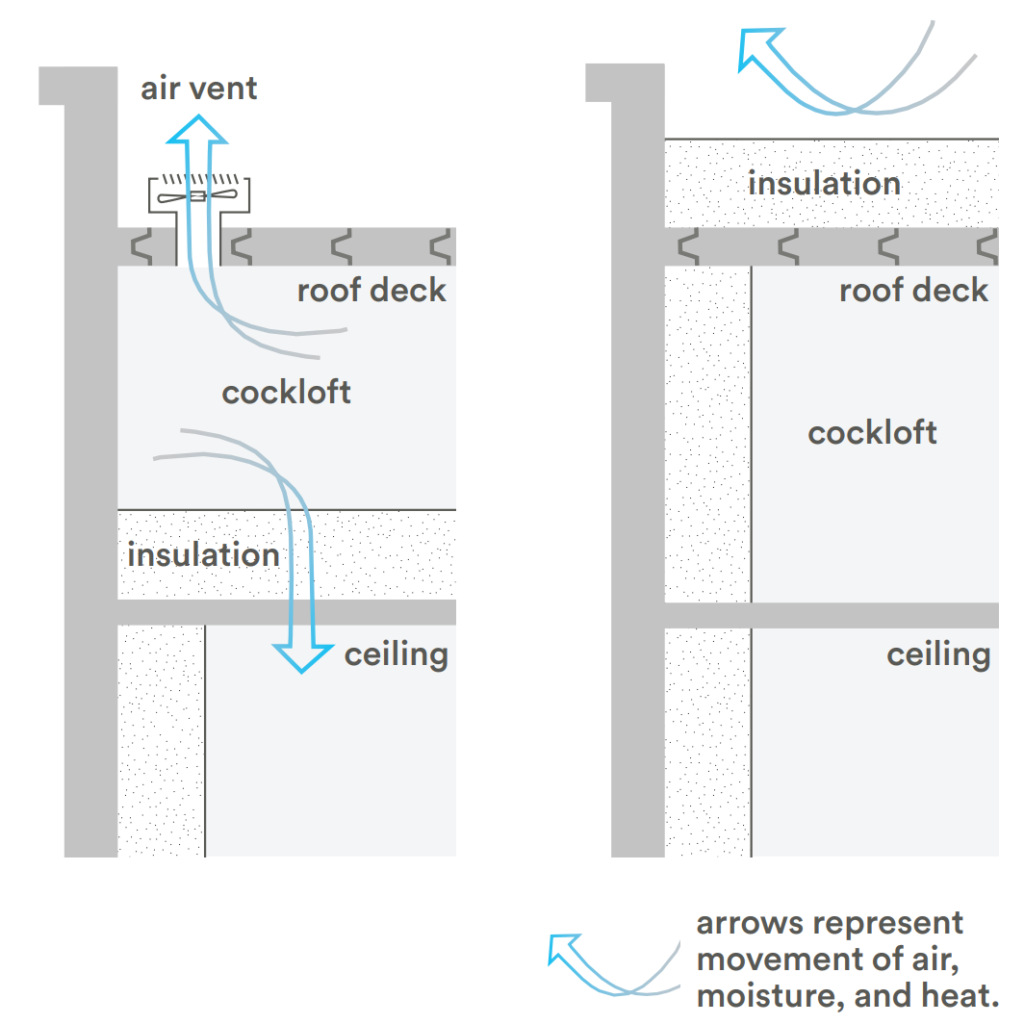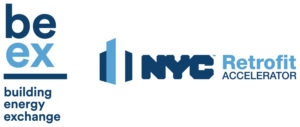Roof Insulation
High-performance roof insulation upgrades that improve the building envelope.
Tech Overview
Applicable Buildings Types all buildings
When to Implement at time of roof replacement, mid-cycle, or refinance
*Be sure to consult a qualified service provider to determine the right measures for your building.
What is a Roof Insulation Retrofit?
All buildings must periodically repair or replace their roofs as part of general building maintenance. Upgrading roof insulation improves the lifespan of the buildings and lowers operating cost by reducing demand on the buildings heating and cooling systems.

Fig 1. (Left) Before retrofit: A roof with insulation below the roof deck (at the top floor ceiling), relies on an insufficient barrier to prevent drafts, air and moisture infiltration, resulting in energy loss and high heating and cooling loads. (Right) After retrofit: Proper insulation and air sealing is achieved, resulting in a substantial reduction of drafts, air and moisture infiltration.
How to Implement
A high-performance roof retrofit requires sealing any existing roof vents and placing insulation above the deck. Improving roof insulation in conjunction with window and wall insulation upgrades completes a whole building envelope retrofit that will greatly enhance a buildings performance. Download the full tech primer to learn more about each of the following steps:
A. Eliminate Vents and insulate and seal the interior walls of the cockloft to create a proper air barrier (see Fig. 1 & 2)
B. Add Insulation Above the Roof Deck either above or below the roof membrane
*Before this step, verify that space is available for new insulation
C. Create a Cool Roof by applying a white or light colored finish to the roof to reflect sunlight and absorb less heat
Cost and Benefits
Cost and benefits of roof insulation retrofit will vary depending on your building’s baseline systems and conditions. Typically, buildings can expect to see the following results:
Greenhouse Gas (GHG) Savings
A roof insulation retrofit can increase energy savings of a buildings heating and cooling systems, reducing GHG emissions.
Tenant Experience Improvement
A roof insulation retrofit prevents the buildup of condensation that causes damage to the property and to occupants’ health, reduces air infiltration and drafts, and creates a more comfortable indoor environment.
Utility Savings
A small amount of utility savings can be achieved through the reduction of heating and cooling loads inherent in improving roof insulation.
Capital Cost
Roof air sealing and insulation upgrades require a large capital investment, and are best implemented at roof replacement or major repair.
Maintenance Requirement
A low level of maintenance is required for an upgraded roof and involve periodic inspections to verify proper drainage and surface conditions.
Take Action
This information is part of more than a dozen High Performance Technology Primers prepared by the Building Energy Exchange and the Retrofit Accelerator to introduce decision-makers to solutions that can help them save energy and improve comfort in their buildings. Curious about other retrofitting possibilities? Explore our complete library of Tech Primers here.
The NYC Retrofit Accelerator’s team of Efficiency Advisors offers free, personalized advisory services to help streamline the process of making energy efficient improvements to your buildings.
Get in touch with the NYC Retrofit Accelerator today!
Call (212) 656-9202
Visit nyc.gov/RetrofitAccelerator
Email info @nycretrofit.org
